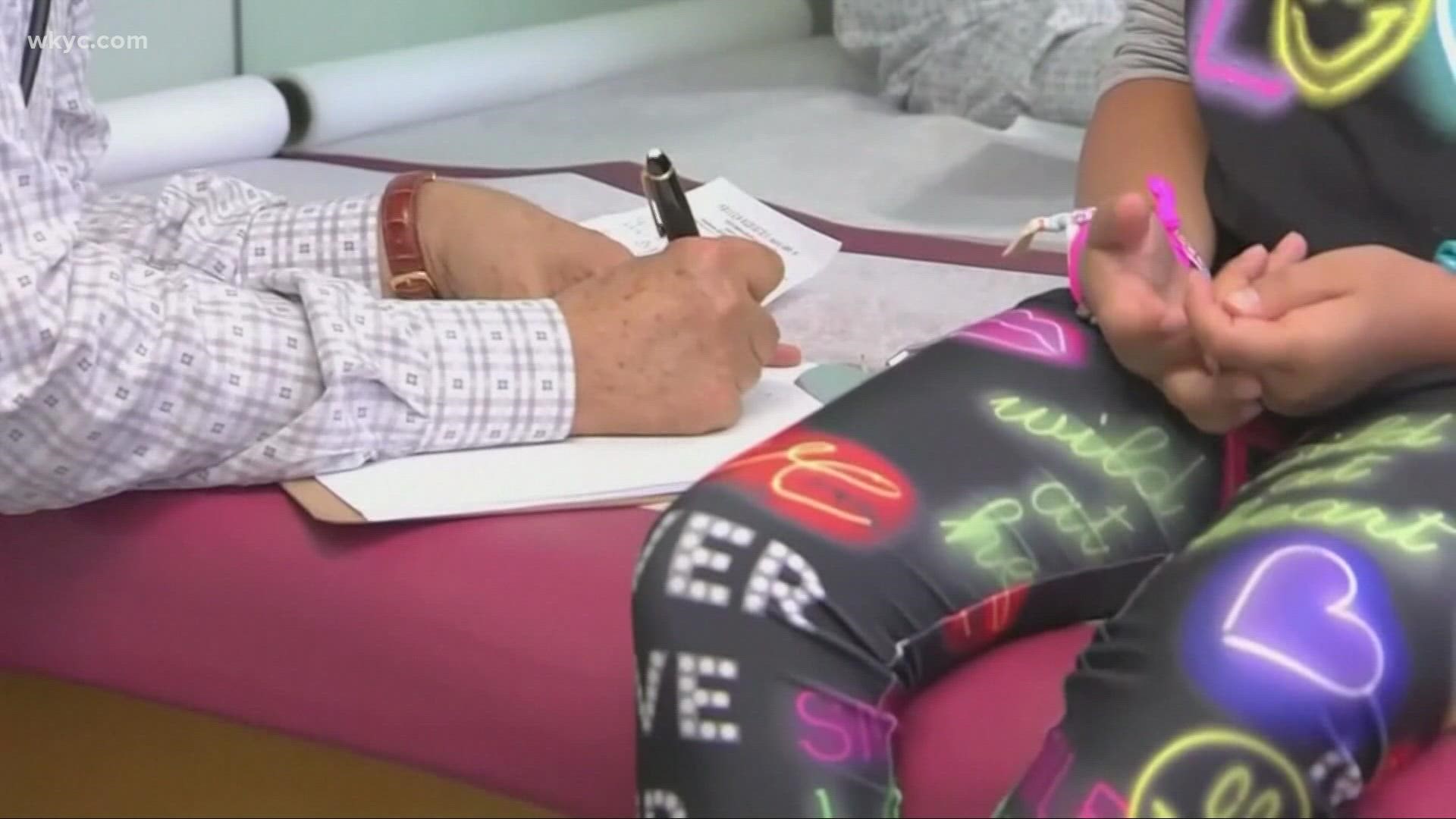CLEVELAND — As the delta variant of COVID-19 spreads across the United States, more concerns are growing regarding how to keep children safe.
Fourteen pediatric coronavirus cases were reported in Ohio this weekend, according to a spokesperson for the Cleveland Clinic. States further south are reporting a rapid uptick in children admitted to local hospitals.
While Emily Timm and her husband are both vaccinated, their two young children are not yet eligible. They are left dabbling with how to safely manage the recent surge in cases and leading a normal like during 3-year-old Camila's developmental years.
"We're getting kind of nervous again," Emily said "We still live fairly cautiously. We don't do much indoor dining. We do a lot of outdoor things."
Dr. Claudia Hoyen with University Hospitals told 3News children are the "most vulnerable population" as the fourth wave of COVID-19 spreads across the country.
"This summer is a very different story for the children," Hoyen stated. "We are seeing children much, much sicker than the early days of the pandemic."
There is no data yet that shows the delta variant is causing worse disease in children, but the rising number in cases is raising concerns, according to Hoyen. As a vaccine for kids under 12 remains unauthorized and mask wearing is less common than last summer, the little ones are more at risk.
"Protect the most vulnerable, and that's our children," Hoyen said.
Last week, the Ohio Department of Health released its suggested COVID-19 protocols for school students and teachers this fall, strongly recommending mask wearing for younger students along with vaccinations for those old enough, including staff. On Thursday, ODH released further guidance on quarantining for K-12 schools, outlining the measures that should be in place to avoid temporary isolation.
For example, experts say kids and teachers exposed to the virus can continue to perform normal activities even if they are not vaccinated. However, this can only happen if all those in the classroom (again, regardless of vaccination status) are wearing masks and other guidelines are in place such as three-foot distancing between desks and regular monitoring for COVID symptoms.
If these protocols are not occurring with regularity, those who are vaccinated still do not have to quarantine, but should monitor their symptoms for two weeks and perhaps seek a coronavirus test. Isolation is also not necessary for unvaccinated students if it was determined the child was wearing a face mask and social distancing, but those without protection will be asked to quarantine for at least 14 days, and the ones who test positive must self-isolate for at least 10 days after either experiencing symptoms or getting the test result.
"In-person learning is very important for the cognitive, social, and emotional development of our children," Ohio's Chief Medical Officer Dr. Bruce Vanderhoff said in a statement. "Developing guidelines that will allow well-protected students to be able to remain in the classroom as much as possible – even if there has been an exposure to COVID-19 – help facilitate that important in-person learning this year."
ODH provided a flow chart to better explain what should be done in certain situations:

